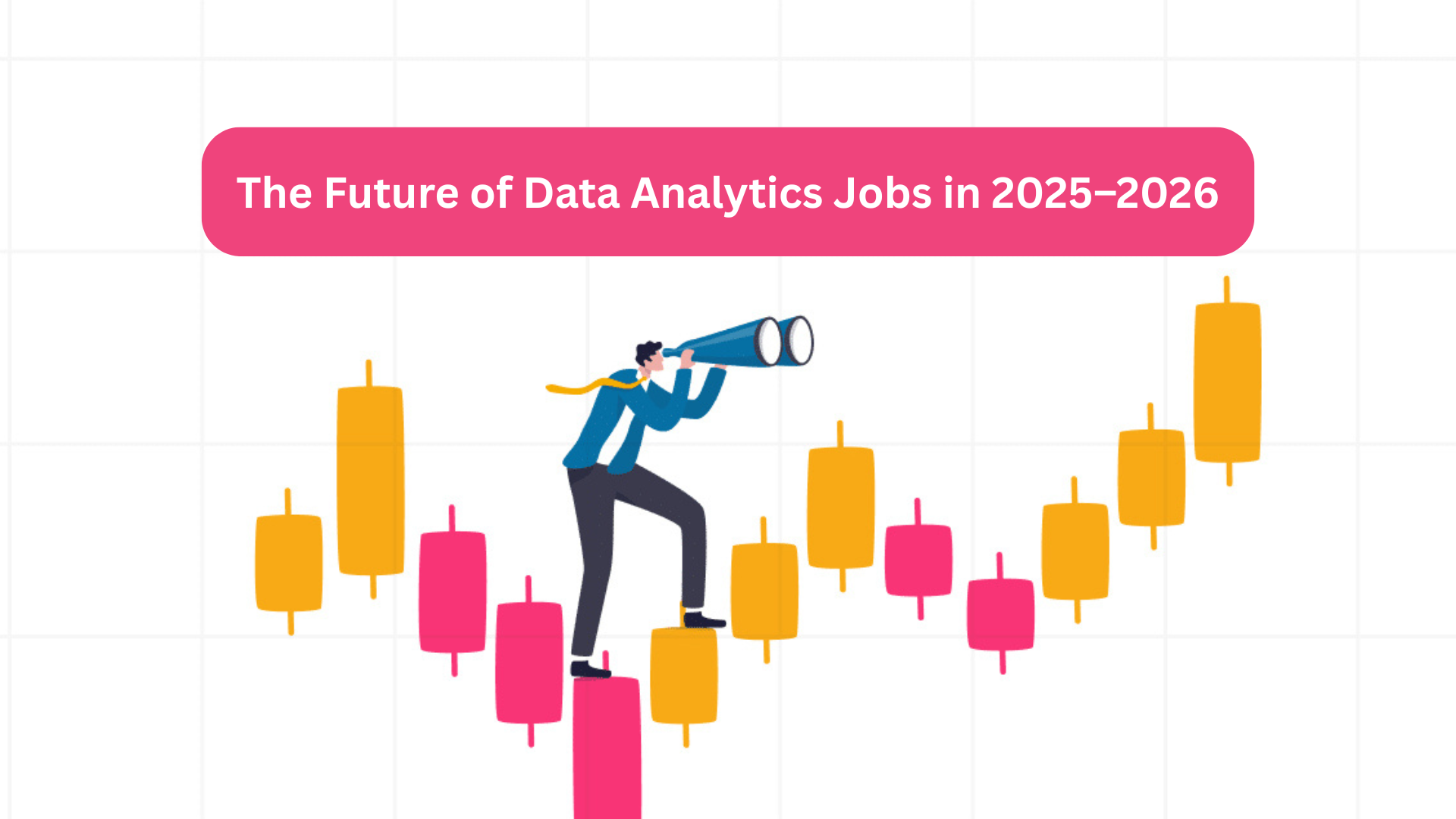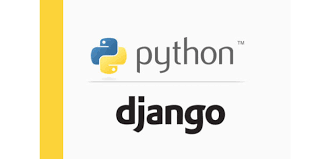Prepare for your Data Science interviews with comprehensive insights into commonly asked questions and detailed answers. Explore a wide array of topics, including statistical analysis, machine learning, data visualization, and more. This guide offers in-depth explanations, practical examples, and strategies to tackle technical and theoretical questions effectively. Enhance your understanding of key concepts and methodologies, empowering you to confidently navigate the complexities of Data Science interviews.
Q1. Write a SQL query that makes recommendations using the pages that your friends liked. Assume you have two tables: a two-column table of users and their friends, and a two-column table of users and the pages they liked. It should not recommend pages you already like.
Ans: Assuming the tables are named user_friends with columns user_id and friend_id and user_pages with columns user_id and page_id and the user for whom recommendations are being generated has an ID, let's say 'current_user_id'.
SELECT DISTINCT up.page_id, up.page_name
FROM user_pages up
JOIN user_friends uf ON up.user_id = uf.friend_id
LEFT JOIN user_pages liked_pages ON liked_pages.user_id = 'current_user_id' AND liked_pages.page_id = up.page_id
WHERE uf.user_id = 'current_user_id' AND liked_pages.page_id IS NULL;
Q2. Your task involves understanding and possibly optimizing the isMatch() method for high-speed performance while maintaining accuracy. The query language recognizes a single special character, . (dot), which matches precisely one character. Please review the provided code and optimize the isMatch() method or suggest improvements to achieve faster query matching. Additionally, consider potential data structures or algorithms that might enhance the efficiency of the spell checker. Given the code, what strategies could you employ to optimize the isMatch() method for quicker query matching while preserving accuracy? How might you improve the spell checking process within the given framework? Feel free to propose algorithmic optimizations, alternative data structures, or modifications to the existing code to enhance its performance.
Ans:
class SpellChecker:
def __init__(self):
self.word_dict = {}
def setUp(self, list_of_words):
for word in list_of_words:
length = len(word)
if length not in self.word_dict:
self.word_dict[length] = []
self.word_dict[length].append(word)
def isMatch(self, query):
length = len(query)
if length not in self.word_dict:
return False
for word in self.word_dict[length]:
match = True
for i in range(length):
if query[i] != '.' and query[i] != word[i]:
match = False
break
if match:
return True
return False
This code creates a SpellChecker class with setUp() to preprocess the words and isMatch() to check if a given query matches any word in the dictionary. The setUp() function organizes the words by their lengths, which helps narrow down the search space.
The isMatch method correctly returns a boolean value indicating whether the query matches any word in the dictionary
Q3. Implement cost effective and optimized contact strategy in early-stage collections.
Ans: In early-stage collections, implementing a cost-effective and optimized contact strategy is critical for maximizing recovery while minimizing operational expenses. Leveraging data science techniques can enhance this strategy. Here's a step-by-step approach:
1. Data Analysis:
- Segmentation: Analyze historical data to identify customer segments based on payment behaviour, demographics, and past interactions.
- Predictive Modelling: Develop predictive models to forecast the likelihood of payment and default for each segment.
2. Contact Prioritization:
- Scoring System: Assign scores to customers based on predictive models, prioritizing high-risk individuals for early contact.
- Dynamic Prioritization: Regularly update scores to adapt to changing customer behaviour.
3. Multi-Channel Approach:
- Channel Optimization: Utilize a mix of communication channels (email, SMS, and calls) based on customer preferences and cost-effectiveness.
- Automation: Implement automated systems for routine communications, reserving personalized interactions for higher-risk cases.
4. Frequency and Timing:
- Dynamic Scheduling: Adjust contact frequency dynamically based on customer responses and payment patterns.
- Optimal Timing: Schedule communications during times when customers are more likely to engage.
5. Behavioural Analysis:
- Payment Triggers: Identify behavioural triggers indicating an increased likelihood of payment.
- Engagement Metrics: Monitor customer responses to different contact methods and optimize accordingly.
6. Performance Monitoring:
- KPI Tracking: Define key performance indicators (KPIs) such as recovery rate, cost per contact, and customer satisfaction.
- Feedback Loop: Establish a feedback loop to continuously refine the strategy based on performance metrics.
7. Compliance and Ethical Considerations:
- Regulatory Compliance: Ensure adherence to collection regulations and ethical standards.
- Customer-Centric Approach: Prioritize customer experience to maintain long-term relationships.
8. Adaptive Learning:
- Machine Learning Iterations: Implement machine learning algorithms for continuous learning and improvement.
- Adapt to Market Changes: Adjust the strategy based on economic conditions and market trends.
Implementing this data-driven, customer-centric, and adaptive contact strategy can lead to a more cost-effective and optimized early-stage collections process.
It involves various considerations, including data preprocessing, feature engineering, model training, and deployment. Here's a simplified example using Python, Pandas, Scikit-Learn, and Flask. Please note that this is a basic example, and a real-world implementation would require more extensive testing, validation, and integration.
# Import necessary libraries
import pandas as pd
from sklearn.ensemble import RandomForestClassifier
from sklearn.model_selection import train_test_split
from sklearn.preprocessing import StandardScaler
from sklearn.cluster import KMeans
from flask import Flask, request, jsonify
# Sample data (replace this with your actual dataset)
data = {
'customer_id': [1, 2, 3, 4, 5, 6],
'payment_status': [1, 0, 1, 1, 0, 1],
'days_since_last_payment': [15, 30, 10, 5, 45, 8],
'amount_due': [100, 50, 120, 80, 200, 90],
'customer_age': [25, 30, 35, 28, 40, 22]
}
df = pd.DataFrame(data)
# Feature engineering and preprocessing
df['late_payment'] = df['days_since_last_payment'].apply(lambda x: 1 if x > 30 else 0)
# Feature selection
features = ['amount_due', 'customer_age', 'late_payment']
X = df[features]
y = df['payment_status']
# Train-test split
X_train, X_test, y_train, y_test = train_test_split(X, y, test_size=0.2, random_state=42)
# Model training (Random Forest Classifier as an example)
model = RandomForestClassifier(n_estimators=100, random_state=42)
model.fit(X_train, y_train)
# Customer segmentation using K-means clustering
scaler = StandardScaler()
X_scaled = scaler.fit_transform(X)
kmeans = KMeans(n_clusters=2, random_state=42)
df['cluster'] = kmeans.fit_predict(X_scaled)
# Flask web application for contact strategy
app = Flask(__name__)
@app.route('/contact_strategy', methods=['POST'])
def contact_strategy():
try:
# Receive input data (replace this with actual input format)
input_data = request.get_json()
customer_id = input_data['customer_id']
# Retrieve customer information
customer_info = df[df['customer_id'] == customer_id].iloc[0]
# Implement contact strategy (example: sending email to high-risk customers)
if customer_info['cluster'] == 1:
return jsonify({"message": f"Reminder email sent to customer {customer_id}."})
else:
return jsonify({"message": f"No action taken for customer {customer_id}."})
except Exception as e:
return jsonify({"error": str(e)})
if __name__ == '__main__':
app.run(debug=True)
In this example, the Flask application provides an API endpoint (/contact_strategy) to receive input data (customer_id) and implement the contact strategy based on the trained model and clustering results. Please adapt this code according to your specific use case, integrate it with your infrastructure, and ensure proper security and compliance measures are implemented.
Q4. Explain the optimization of ML models and the differences between each one.
Ans: Optimizing machine learning (ML) models is crucial to ensure they perform well in terms of accuracy, efficiency, and generalization. Different ML models may require distinct optimization techniques. Here's a general overview of optimization strategies and the differences between them:
1. Hyperparameter Tuning:
- Definition: Adjusting the hyperparameters of a model to optimize its performance.
- Differences: Each ML algorithm has specific hyperparameters (e.g., learning rate in neural networks, depth in decision trees) that impact performance. Grid search, random search, or more advanced techniques like Bayesian optimization can be used.
2. Feature Scaling:
- Definition: Scaling features to a similar range, improving convergence and performance.
- Differences: Algorithms like Support Vector Machines (SVM) and k-Nearest Neighbours (k-NN) are sensitive to the scale of features, so feature scaling is crucial for these models.
3. Feature Engineering:
- Definition: Creating new features or transforming existing ones to enhance model performance.
- Differences: Depending on the model, different feature engineering techniques may be effective. For example, decision trees might handle categorical variables well, while linear models may benefit from one-hot encoding.
4. Regularization:
- Definition: Introducing a penalty term to prevent overfitting.
- Differences: Regularization methods like L1 (Lasso) and L2 (Ridge) regularization are used differently across models. For example, L1 regularization encourages sparsity in linear models, while dropout is a form of regularization used in neural networks.
5. Ensemble Methods:
- Definition: Combining predictions from multiple models to improve overall performance.
- Differences: Models like Random Forests and Gradient Boosting Machines (GBM) use different strategies for creating ensembles. Random Forests build multiple decision trees independently, while GBM builds trees sequentially.
6. Cross-Validation:
- Definition: Assessing model performance using multiple train-test splits.
- Differences: Cross-validation helps estimate a model's performance robustly. Techniques like k-fold cross-validation or stratified cross-validation are used depending on the dataset and model characteristics.
7. Optimizing Training Time:
- Definition: Reducing the time required to train a model.
- Differences: Neural networks may benefit from techniques like batch normalization and parallelization, while gradient boosting methods are often optimized through algorithmic enhancements.
8. Transfer Learning:
- Definition: Leveraging knowledge from pre-trained models for a specific task.
- Differences: Transfer learning is commonly used in deep learning, where pre-trained models like those from the ImageNet dataset can be fine-tuned for specific tasks.
9. Model Quantization:
- Definition: Reducing the memory footprint and computational cost of a model.
- Differences: Quantization is often applied to deep learning models, especially for deployment on edge devices, where memory and computation resources are limited.
10. Algorithm Selection:
- Definition: Choosing the most suitable algorithm for a specific task.
- Differences: Understanding the characteristics of different algorithms is crucial. For example, decision trees are interpretable but may overfit, while neural networks can capture complex patterns but require more data and computational resources.
Optimizing ML models involves a combination of these techniques based on the characteristics of the data, the chosen algorithm, and the goals of the task. The effectiveness of each optimization method can vary depending on the specific context and requirements.
Q5. What is a collaborative based recommendation? How does it work?
Ans: Collaborative-based recommendation is a type of recommendation system that generates personalized suggestions for users based on the preferences and behaviour of similar users. The underlying idea is that users who have agreed on certain items in the past are likely to agree on other items in the future.
There are two main types of collaborative-based recommendations:
1. User-Based Collaborative Filtering:
- Idea: Recommends items based on the preferences of users who are similar to the target user.
- How it works:
- Similarity Calculation: Measure the similarity between users. This can be done using various metrics such as cosine similarity, Pearson correlation, or Jaccard similarity.
- Neighbourhood Selection: Identify a set of users who are most similar to the target user.
- Prediction: Predict the preferences of the target user for items by aggregating the preferences of the selected similar users.
User-Based Collaborative Filtering Example:
Similarity Calculation:
- Calculate the similarity between users based on their past interactions. For instance, if User A and User B have liked or rated similar items, they are considered more similar.
Neighbourhood Selection:
- Select a subset of users who are most similar to the target user. This subset forms the "neighbourhood" of the target user.
Prediction:
- Predict the target user's preference for a specific item by aggregating the preferences of the users in the neighborhood. Weighted averages or other aggregation methods can be used.
2. Item-Based Collaborative Filtering:
- Idea: Recommends items that are similar to the ones the target user has liked or interacted with in the past.
- How it works:
- Item Similarity: Calculate the similarity between items based on user preferences. Similarity metrics can include cosine similarity, Pearson correlation, or Jaccard similarity.
- Neighbourhood Selection: Identify a set of items that are most similar to the ones the target user has interacted with.
- Prediction: Predict the target user's preferences for items by considering the preferences of the selected similar items.
Item-Based Collaborative Filtering Example:
Item Similarity:
- Calculate the similarity between items based on the preferences of users. If many users who liked Item X also liked Item Y, these items are considered similar.
Neighbourhood Selection:
- Identify a set of items that are most similar to the ones the target user has liked or interacted with.
Prediction:
- Predict the target user's preference for a new item by considering the preferences of similar items. Aggregation methods like weighted averages are commonly used.
Collaborative-based recommendation systems leverage the collective wisdom of users to make predictions about an individual user's preferences. While effective, they may face challenges like the "cold start" problem (difficulty recommending items for new users or items with little history) and scalability issues as the user/item space grows.
Q6. What is Linear Regression? Explain the difference between Simple Linear Regression and Multiple Linear Regression.
Ans: Linear regression is a statistical method used for modeling the relationship between a dependent variable (target) and one or more independent variables (features) by fitting a linear equation to observed data. The goal is to find the best-fitting line that minimizes the sum of squared differences between the observed and predicted values. The equation for a simple linear regression is:
y=mx+b
where:
- y is the dependent variable (target),
- x is the independent variable (feature),
- m is the slope of the line,
- b is the y-intercept.
Linear regression can be extended to multiple independent variables, resulting in multiple linear regression.
Simple Linear Regression:
In simple linear regression, there is only one independent variable. The relationship between the dependent and independent variables is modeled as a straight line. The equation for simple linear regression is, as mentioned earlier:
y=mx+b
Here, y is predicted based on a single x.
Multiple Linear Regression:
In multiple linear regression, there are two or more independent variables, and the relationship is modeled as a hyperplane in a multidimensional space. The equation for multiple linear regression is:
y=b0+b1x1+b2x2+...+bnxn
where:
- y is the dependent variable,
- x1,x2,…,xn are the independent variables,
- b0 is the y-intercept,
- b1,b2,…,bn are the coefficients representing the impact of each independent variable on the dependent variable.
The key difference lies in the number of independent variables. Simple linear regression deals with one independent variable, while multiple linear regression deals with two or more. Both are used to analyze and model relationships between variables, but multiple linear regression allows for more complex modeling in situations where multiple factors may influence the dependent variable.
Q7. What are all the data cleaning techniques?
Ans: Data cleaning, also known as data cleansing or data preprocessing, is a crucial step in the data analysis process. It involves identifying and correcting errors or inconsistencies in datasets to improve their quality and reliability. Here are some common data cleaning techniques:
- Handling Missing Values:
- Deletion: Remove rows or columns with missing values.
- Imputation: Fill in missing values using techniques such as mean, median, mode, or machine learning-based imputation.
- Dealing with Duplicates:
- Identify and Remove Duplicates: Detect and eliminate identical rows or records.
- Deduplication: Keep only the first occurrence of each unique record.
- Handling Outliers:
- Visual Inspection: Use visualizations like box plots to identify outliers.
- Statistical Methods: Identify outliers based on statistical measures such as Z-scores or interquartile range (IQR).
- Data Standardization:
- Scaling Numeric Data: Standardize or normalize numeric features to a common scale.
- Unit Conversion: Ensure consistency in units for measurement variables.
- Data Formatting:
- Date and Time Formatting: Standardize date and time formats.
- Text Cleaning: Remove unnecessary whitespaces, convert to lowercase, and handle special characters.
- Handling Inconsistent Data:
- Standardize Categorical Values: Ensure consistency in categorical variables (e.g., "Male" vs. "M" for gender).
- Standardize Units: Convert units to a consistent format.
- Addressing Typos and Spelling Errors:
- Fuzzy Matching: Use fuzzy matching algorithms to identify and correct typos.
- Text Correction Tools: Leverage tools like spell checkers to identify and correct spelling errors.
- Handling Irrelevant Data:
- Filtering: Remove irrelevant or unnecessary columns that do not contribute to the analysis.
- Row Filtering: Exclude rows that are not relevant to the analysis.
- Encoding Categorical Variables:
- One-Hot Encoding: Convert categorical variables into binary vectors.
- Label Encoding: Convert categorical variables into numerical labels.
- Handling Inconsistent Data Entry:
- Consistent Naming Conventions: Enforce consistent naming conventions for entities.
- Regex and Pattern Matching: Use regular expressions to identify and correct inconsistent patterns.
- Dealing with Imbalanced Data:
- Undersampling/Oversampling: Address class imbalances by either reducing the size of the majority class (undersampling) or increasing the size of the minority class (oversampling).
- Handling Skewed Data:
- Transformation: Apply mathematical transformations (e.g., log transformation) to mitigate skewness.
- Data Validation:
- Cross-Field Validation: Validate relationships between fields to ensure logical consistency.
- Range Checking: Verify that numerical values fall within expected ranges.
- Handling Incomplete Data:
- Imputation Techniques: Use advanced imputation methods like k-Nearest Neighbors (k-NN) for handling incomplete data.
- Exploratory Data Analysis (EDA):
- Visualization: Utilize plots and charts for exploratory data analysis to identify patterns, trends, and potential issues.
Data cleaning is often an iterative process, and the specific techniques applied depend on the nature of the dataset and the goals of the analysis. It's important to thoroughly understand the data and domain context to perform effective data cleaning.








Add a comment: